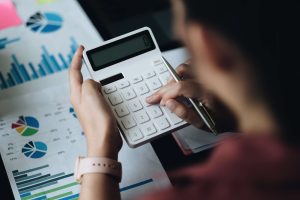Mark to Market MTM: Definition, How it Works, Example The Motley Fool
But if it simply holds those securities to maturity, it’ll be able to pay out all depositors. That’s regardless of whether or not the company intends to hold those Treasury bonds until maturity, at which point they could be redeemed for the full face value. But using mark to market accounting can give investors a full picture of how market conditions have affected a company’s investments.
Real-World Example of Mark to Market Accounting

Let’s suppose that the trader needed to issue a financial report on Day 4, and that the futures contract was previously listed on their financial statements at $60. In that scenario, the asset would be reported (on day 4) at $58, and it would also result in an unrealized loss of $2. Let’s look at a practical example of MTM in the trading of futures contracts.
Mark to Market Losses in 2008
It is used to determine whether the account holder meets the broker’s margin requirements. From the lending business to real estate asset management, mark-to-market accounting is a useful tool for establishing the fair market value of an asset or a business. However, its malleability is a double-edged sword, given that it can also be used to deceptively hide true https://www.bookstime.com/ values from investors and creditors. In this way, Enron was able to fool Wall Street for years, until they could no longer hide their losses. The death blow that accelerated their demise was when Dynergy backed out of a deal at the same time the SEC was opening investigations into Enron’s mysterious actions around closing subsidiaries and changing executives.

Most Bankers Would Rather Go Without
- To estimate the value of illiquid assets, a controller can choose from two other methods.
- Mark to Market accounting ensures your financial reporting aligns with the ongoing economic environment.
- Let’s say a day trader’s trades brought them one million dollars in profit during the taxable year.
- First and foremost, SoFi Learn strives to be a beneficial resource to you as you navigate your financial journey.We develop content that covers a variety of financial topics.
- This concept is crucial, adding layers of transparency to financial statements and reinforcing trust among investors.
Under generally accepted accounting principles (GAAP) in the United States, the historical cost principle accounts for the assets on a company’s balance sheet based on the amount of capital spent to buy them. This method is based on a company’s past transactions and is conservative, easy to calculate, and reliable. One of the fundamental principles of mark to market accounting is the use of observable market data to determine fair value. This includes quoted prices in active markets for identical assets or liabilities, which are considered the most reliable indicators of fair value.
Prevents Banks from Overextending Loans
For other types of assets, such as loan receivables and debt securities, it depends on whether the assets are held for trading (active buying and selling) or for investment. Loans and debt securities that are held for investment or to maturity are recorded at amortized cost, unless they are deemed to be impaired (in which case, a loss is recognized). However, if they are available for sale or held for sale, they are required to be recorded at fair value or the lower of cost or fair value, respectively. Certain assets and liabilities that fluctuate in value over time need to be periodically appraised based on current market conditions. That includes certain accounts on a company’s balance sheet and futures contracts.

Can Mark-to-Market Accounting Be Used on All Types of Assets?
When compared to historical cost accounting, mark to market can present a more accurate representation of the value of the assets held by a company or institution. It is because, under the first method, the value of the assets must be maintained at the original purchase cost. For example, if the asset has low liquidity or investors are fearful, the current selling price of a bank’s assets could be much lower than the actual value. This issue was seen during the financial crisis of 2008–09 when the mortgage-backed securities (MBS) held as assets on banks’ balance sheets could not be valued efficiently as the markets for these securities had disappeared. However, if there is an unrealized gain on the securities, the election will generally result in more income subject to tax and a higher tax liability. A day trader who qualifies as a trader in securities is also allowed to deduct the expenses from his or her trading activity as business expenses because the trading activity is considered to be a business.
How Did Enron Use Mark-to-Market Accounting?





